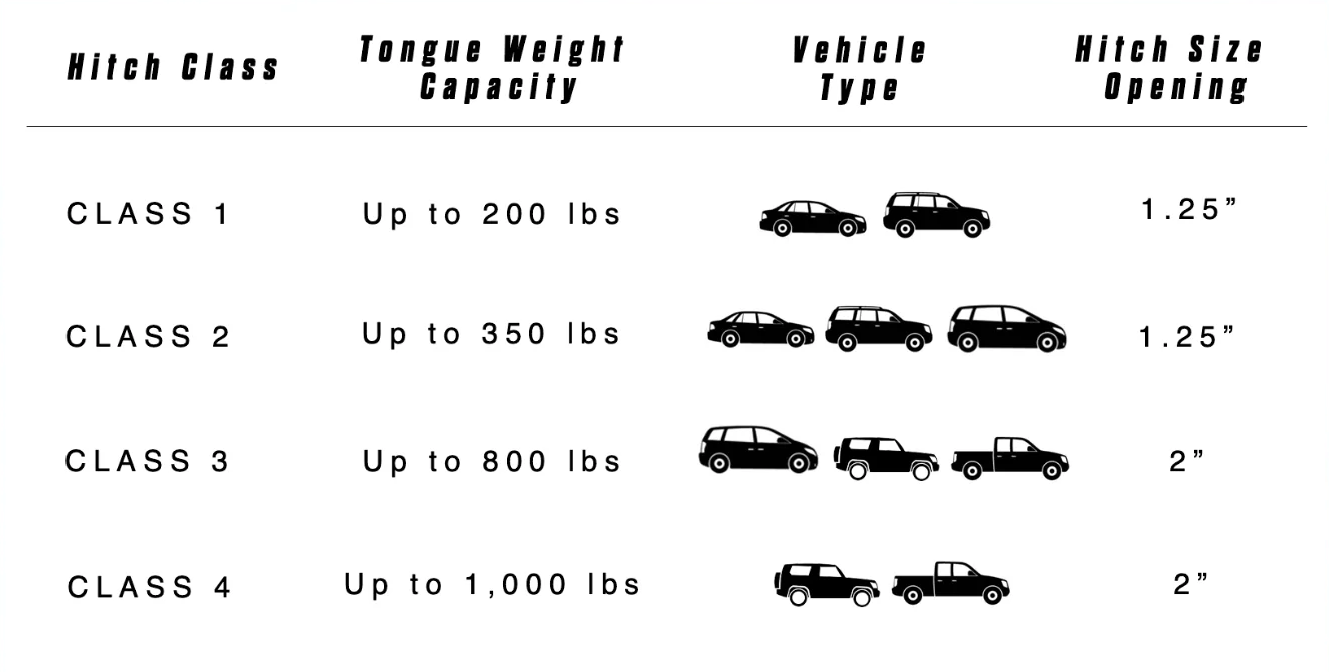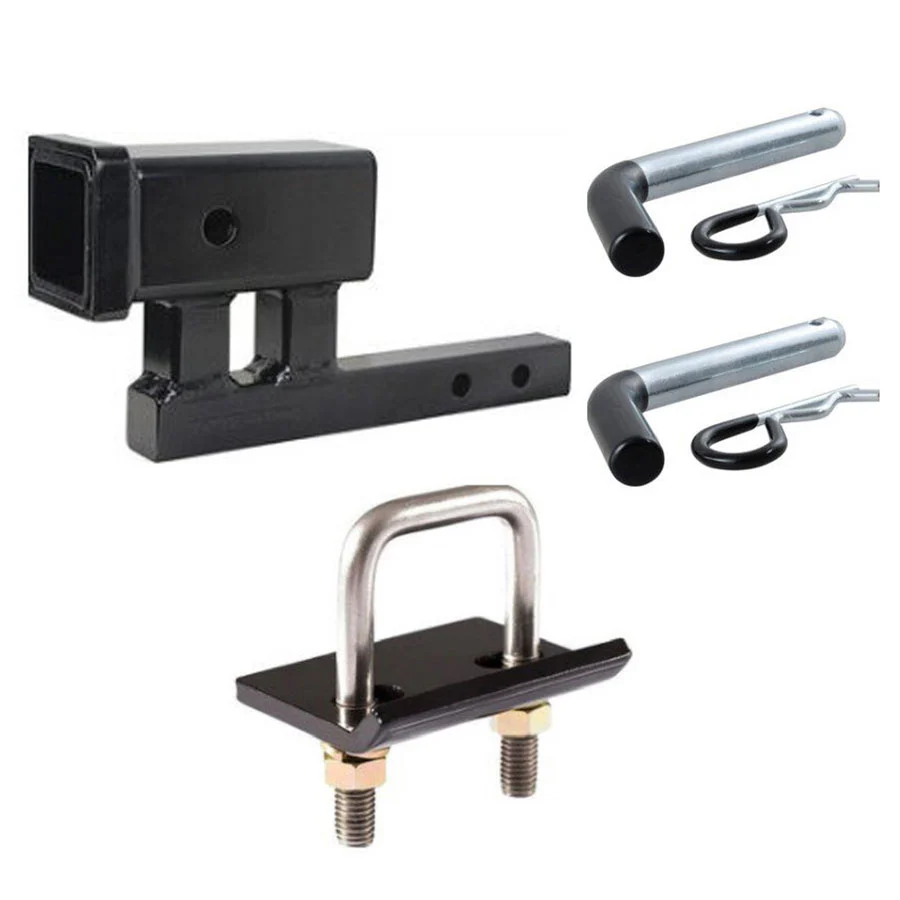So here’s the thing. I once bought a shiny new platform bike rack, all excited to finally stop jamming my bikes into the trunk. Took it out of the box, walked up to my car like a boss—and then realized it didn’t fit. Like, at all. Total facepalm moment. Turns out, not all hitches and racks are meant to be together. Who knew?
Not every bike rack fits every hitch. Platform-style racks typically work with 1.25" or 2" hitch receivers, depending on your vehicle’s setup. You’ll need to check your hitch’s size, class, and weight capacity to make sure everything clicks.
If you’re unsure whether your rack and hitch are a good match, don’t stress. You’re not alone. I’ll walk you through the things I wish someone had told me earlier. It’s easier than you think—once you know what to look for.

Understanding Hitch Receiver Sizes and Classes
When I first got into biking, I didn’t even know hitches had "classes." I thought they were just... rectangles under your bumper. Turns out, size—and class—really matter.
Bike racks typically fit either a 1.25" or 2" hitch receiver. But it’s not just about fitting—it’s about handling the weight of the rack and your bikes safely.
So, quick breakdown: smaller cars like sedans usually have 1.25" hitches (Class I or II), while bigger vehicles—SUVs, trucks—often have 2" hitches (Class III or higher). The bigger the hitch, the more weight it can handle. Sounds simple, right? But it gets trickier.
What size says... and what class actually means
You’d think a 2" hitch means it’s strong enough for anything. But nope. Size is just part of the story. The class of the hitch tells you how much weight it can hold—specifically the "tongue weight," which is how much downward force your rack and bikes put on it.
🚗 Hitch Receiver Basics
|
Hitch Size |
Class |
Common On |
Max Tongue Weight |
|---|---|---|---|
|
1.25" |
I or II |
Small cars, sedans |
Up to ~350 lbs |
|
2" |
III or IV |
SUVs, trucks |
Up to ~1000 lbs |
So if you’ve got two hefty e-bikes and a platform rack, you better have a 2" Class III hitch. Otherwise? You’re putting a lot of strain on a hitch that wasn’t designed for that kind of load. Not safe. Not fun.
I learned this after loading three adult bikes onto a rack that technically “fit” my 1.25" hitch. Yeah, it fit—but the wobble was scary. The whole setup looked like it was dancing every time I hit a bump. Lesson learned.

How to Identify What Hitch You Have
Okay, so how do you figure out what kind of hitch you’ve got? Don’t worry, you don’t need to be a mechanic. It’s way simpler than I expected.
Look for a label or sticker on the hitch—it should list the receiver size and weight ratings. If not, you can measure the receiver opening yourself. It’ll be either 1.25" or 2".
Also, your vehicle manual might say what class of hitch came with your car. If it’s aftermarket, you might have to Google the brand and model to get more details.
How to avoid guesswork (and regrets)
Eyeballing your hitch and guessing the size? Not the move. You want to be 100% sure before you buy a $300+ rack that ends up collecting dust in the garage.
🔍 My Go-To Hitch Check Checklist
-
Tape measure check: Measure the opening across—simple as that.
-
Look for a label: Most hitches have a sticker with class and weight info.
-
Crawl under the car (yep): It’s not glamorous, but sometimes it’s the only way.
-
Snap a pic: When in doubt, take a photo and ask the bike shop or rack brand.
It’s 10 minutes of detective work that saves hours of frustration later. Trust me.
Should You Use a Hitch Adapter?
Here’s where a lot of people (including me) try to get clever. You find a rack you love, but it’s for a 2" hitch—and yours is 1.25". So you get an adapter. Easy fix, right?
Adapters let you use racks on hitches they weren’t built for, but they usually reduce your weight rating and can make the whole setup less stable. Use them with caution.
I’ll admit it. I used an adapter once. Thought I was a genius. But the whole thing bounced around like crazy. I spent the whole drive watching the rearview mirror and praying my bikes wouldn’t take flight.
The good, the bad, and the shaky
Adapters sound like a brilliant idea—until you see how much they wiggle on the road.
⚠️ Adapter Pros & Cons
|
Pros |
Cons |
|---|---|
|
Makes some racks usable |
Increases play/movement |
|
Cheaper than a new rack |
Reduces overall weight limit |
|
Quick workaround |
Can lead to long-term wear on the hitch |
If you’re only carrying one light bike, an adapter might be okay. But anything heavier or longer—especially e-bikes—deserves a proper match. Honestly, if you’re serious about biking, upgrading your hitch might be the better move.

What Happens If You Get It Wrong?
Let’s not sugarcoat it—getting this wrong can be a real problem. We’re not just talking scratches or noise. We’re talking rack failure, bent hitches, lost bikes, the whole nightmare.
A mismatched rack and hitch setup can lead to serious damage or even accidents. Always check weight ratings, fit, and stability before hitting the road.
I once saw someone lose their rack on the freeway. It slid right off and skidded into the guardrail—bikes and all. Totally avoidable, and seriously dangerous.
What could go wrong?
Here’s what you risk if you skip the research and cross your fingers:
-
Rack sags under the load
-
Hitch bends or breaks over time
-
Bikes scrape your bumper or fall off
-
Rack wobbles into traffic
-
You get pulled over for unsafe cargo
🚨 Common Fail Points
|
Mistake |
What Can Happen |
|---|---|
|
Wrong receiver size |
Loose fit = constant wobble |
|
Too much total weight |
Hitch/frame damage |
|
No anti-rattle device |
Noise and sway on the road |
|
Using adapter incorrectly |
Reduces tongue weight limit |
A little extra effort up front saves you big time in the long run—not to mention peace of mind every time you hit the road.
Conclusion
So, is your hitch compatible with a platform bike rack? If you’ve made it this far—yes, you can totally figure it out. It’s not rocket science. It just takes a few minutes of measuring, checking, and making sure your setup can handle the load.
Get the right size. Confirm the class. Respect the weight limits. Don’t cheap out on adapters unless you really know what you’re doing.
I learned all this the hard way—but you don’t have to. Once I got the right match, my whole riding routine changed. Now I load up, lock down, and cruise out with zero stress.
You can too. Just match smart—and ride happy.



